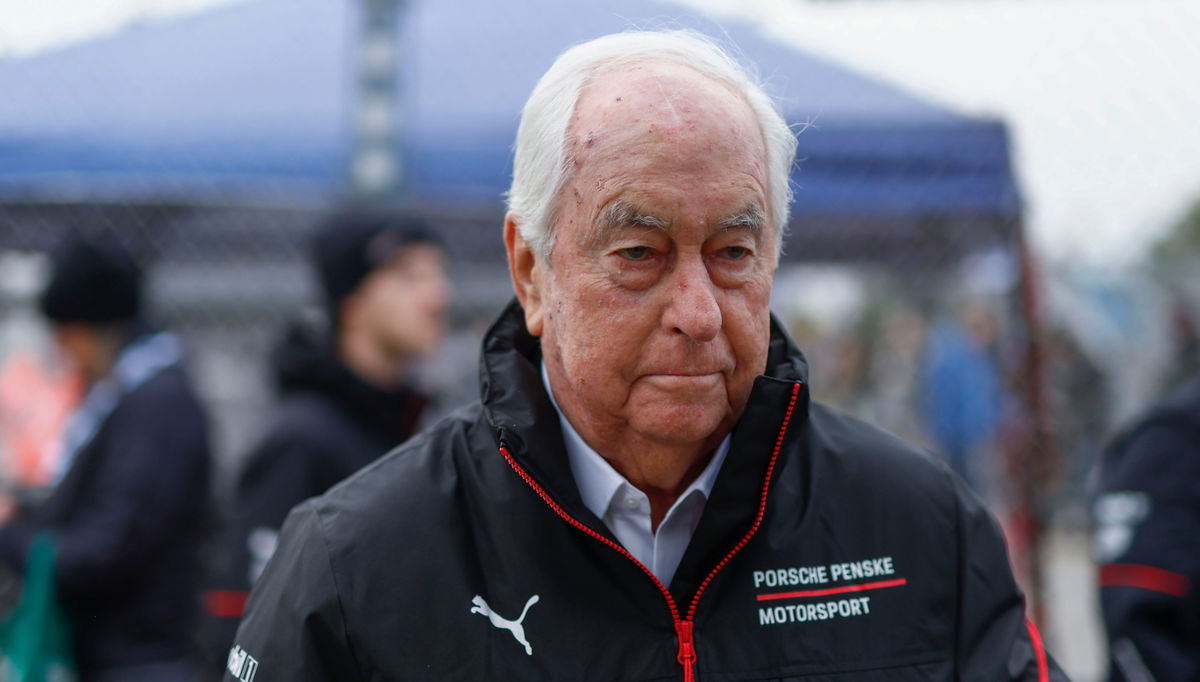
Imago
Image Credits – Porsche Motorsports, X

Imago
Image Credits – Porsche Motorsports, X
Bob Pockrass has been the defining voice of NASCAR journalism for almost three decades, earning trust from fans, drivers, and teams alike with his unwavering dedication and journalistic integrity. Since reporting at the Daytona Beach News-Journal from 1991 and taking on the NASCAR beat full-time in 2003, he has chronicled the sport’s biggest storylines with a mix of authority and accessibility.
Watch What’s Trending Now!
His role at FOX Sports cemented him as the go-to source for everything stock car racing, and his presence in the garage became constant. But in a rare career twist, Pockrass expanded his wheelhouse by covering Roger Penske’s IndyCar Series beginning in February 2025, as FOX consolidated its motorsports coverage across both stock cars and open-wheel racing.
That transition means starting fresh in a paddock where he’s not yet the familiar face he is in NASCAR, but for a journalist whose reputation is built on being front and center, Pockrass revealed the difficulties of building those same relationships in IndyCar that he built over the years in NASCAR.
ADVERTISEMENT
From NASCAR’s insider to IndyCar’s rookie voice
Even veterans, as Bob Pockrass admits, sometimes find themselves in fresh waters. On a recent Door Bumper Clear appearance, Pockrass was unflinchingly candid about starting from scratch in a paddock where he doesn’t yet carry the same instant recognition. “I’ve been covering NASCAR full-time since 2003, so 20 years. You know who to go to in NASCAR if something comes up—it’s natural. And here it’s like, oh, do I need to talk to this person from this team or that person, and then which one’s going to lie to you and which one’s not? Because sometimes, you know, you kind of know that after being around, like, who’s going to be maybe a little bit more forthcoming. So it just, it takes time.” As Pockrass said, ‘time’ is the main differential factor, and the rapport in relationships comes with experience. This mix of honesty and persistence in his words is precisely what has defined Pockrass’s career, and it’s what now carries him into IndyCar.
In 20 years, the Indiana native established himself as NASCAR’s go-to journalist, consistently breaking major news and being among the first on the ground when tempers flared. He was there to capture the chaos when Team Penske’s Joey Logano and Denny Hamlin clashed at Auto Club Speedway in 2013, providing early reports that rippled through the sport. When NASCAR unveiled sweeping changes to its playoff system, Pockrass’s analysis became a reference point across mainstream outlets.
ADVERTISEMENT
And fans still remember when his hilarious Twitter profile picture, accidental but legendary, taken in the middle of a heated pit-road brawl at North Wilkesboro Speedway on May 20, 2024, following the NASCAR All-Star Race, involving Ricky Stenhouse Jr. and Kyle Busch turned him into a meme, a symbol of how deeply embedded he was in the garage even in the sport’s rawest moments.
So why IndyCar now? The shift isn’t a departure from NASCAR, but an expansion born out of FOX Sports’ newly acquired rights in Roger Penske Entertainment. For Pockrass, it’s a chance to apply his methodical reporting style to a series that demands the same tenacity, but where the relationships and rhythms are entirely new. As he put it himself, “You just have to start building. You can’t replace…So it just, it takes time.” That acknowledgment may sound simple, but coming from a journalist who has already built a reputation as NASCAR’s most trusted voice, it underscores the real challenge and opportunity behind his leap into Roger Penske’s IndyCar empire.
ADVERTISEMENT
How IndyCar media coverage differs from NASCAR
IndyCar’s media attention tends to surge around its most iconic events, with the Indianapolis 500 standing tall above the rest. In May 2025, the race drew 7.08 million viewers, making it the most-watched Indy 500 broadcast in 17 years and marking a more than 40% increase over 2024’s telecast. Meanwhile, through its first eight races in 2025, IndyCar averaged 2.007 million viewers per race, a 27% increase compared to 2024. In contrast, NASCAR effectively maintains a steadier audience across its season.
IndyCar coverage also differs in its broadcast structure: all 17 races of the 2025 NTT IndyCar Series are airing exclusively on network television via FOX, with no split between cable or digital platforms, offering consistent visibility throughout the season. NASCAR, conversely, spreads its races across multiple platforms network, cable, and streaming, which introduces variability in viewership. NASCAR’s structure benefits from the genre’s ongoing storyline-driven coverage, keeping audiences engaged every week.
ADVERTISEMENT
Bob Pockrass’ leap into IndyCar shows that his influence isn’t confined to NASCAR alone. By carrying his trademark precision and fan-first approach into a new arena, he’s proving that great journalism transcends series lines, cementing his place as one of motorsport’s most respected storytellers.
ADVERTISEMENT
ADVERTISEMENT
ADVERTISEMENT

